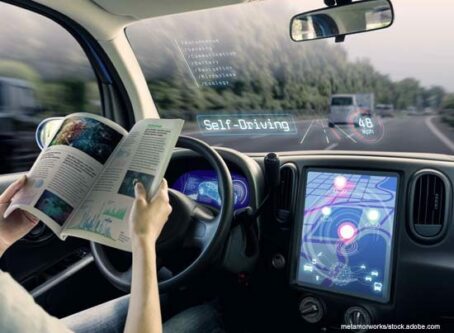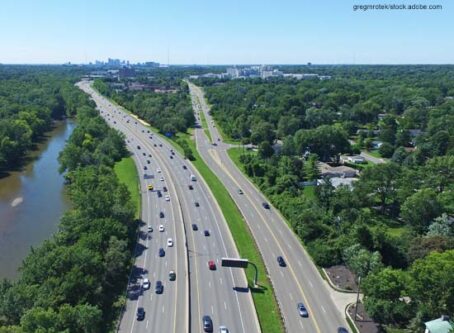Safety board blames trucker, self-driving shuttle attendant for crash
A National Transportation Safety Board investigation recently found that both parties played a role in a crash between a tractor-trailer and an autonomous shuttle that took place in Las Vegas in November 2017.
On July 8, NTSB released its findings of an investigation of a crash that occurred shortly after noon on Nov. 8, 2017, in Las Vegas. A 2006 International truck pulling a 2010 Utility reefer trailer had backed into a 2017 Navya Arma autonomous shuttle.
According to the report, the probable cause of the crash “was the truck driver’s action of backing into an alley, and his expectation that the shuttle would stop at a sufficient distance from his vehicle to allow him to complete his backup maneuver.”
However, the attendant aboard the shuttle was found to also contribute to the crash by “not being in a position to take manual control of the vehicle in an emergency.”
Involved in the crash was a 48-year-old truck driver and a 38-year-old shuttle attendant. The shuttle was operating on a 0.6-mile designated loop that begins and ends at a downtown shopping center. At the time, the shuttle was carrying seven passengers.
The tractor-trailer was backing into an alley while on a delivery route when it struck the shuttle at slow speeds, causing minimal damage to the shuttle. No one was hurt in the crash.
CAPTION: Left: Damage to the tractor-trailer. Right: Damage to the autonomous shuttle. (Courtesy of NTSB)
According to NTSB’s report, the shuttle was a test vehicle on its first day of operation. The shuttle was in autonomous mode at the beginning of the trip on the way to one of two designated routes that included only right turns.
Navya’s incident report reveals that the shuttle’s sensor system detected the truck at nearly 150 feet and continued to track the truck continuously while the truck backed up. Programmed to stop approximately 10 feet from any obstacle in the path, the shuttle decelerated when it was about 98 feet from the truck.
When the shuttle was about 10 feet from the truck and nearly at a complete stop, the attendant pressed one of the emergency stop buttons on the wall opposite the loading doors, according to the report. The attendant and passengers tried to get the trucker’s attention by waving. The truck driver continued in reverse. Eleven seconds after the shuttle stopped, it was struck by the right front tire of the truck.
The trucker involved was no beginner to trucking or that route. The truck driver had been working for the company since 1995 and had been delivering to businesses in downtown Las Vegas for at least 15 years. He had been making deliveries at that particular route two or three times a week.
When questioned by investigators, the trucker said his flasher lights were activated. When he saw the shuttle about halfway down the street, he assumed it would stop at a reasonable distance from the truck. After waiting for a pedestrian to clear his path on his left, he looked to the right when his truck hit the shuttle.
On the other end of the crash, the Navya Arma shuttle is designed primarily for autonomous operations. The shuttle does not a have a steering wheel, a brake or accelerator pedal. When switched to manual operation, the attendant has access to a handheld controller.
However, the attendant did not retrieve the controller during the incident because it was in an enclosed space at the other end of the shuttle. Since the crash, new company policy has made the controller more accessible. Rather than have it stored in the enclosure, attendants are to remove the controller from the storage space and keep it available throughout the trip. Navya, AAA and the city of Las Vegas requires an attendant to be on board to supervise and intervene if necessary, according to the report.
Although the crash was at low speeds and ended in minimal damage, it garnered attention from NTSB since it involved a traditional vehicle and a fully self-driving vehicle. In fact, the yearlong Las Vegas pilot program was the first in the country to operate an autonomous shuttle in live traffic and open to the public, according to NTSB.
The incident highlights the complexities of human-operating vehicles sharing the road with fully self-driving vehicles. As stated in the report, the truck driver had expected the shuttle to move out of its way while the shuttle’s technology had similar expectations for the truck.









